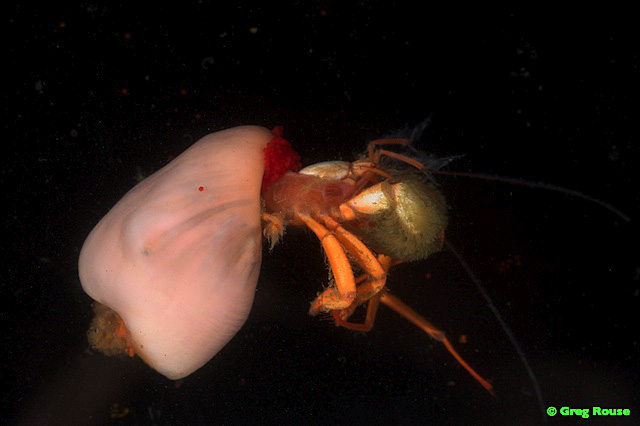Hot and cold come together in the deep sea
By Nadine Lymn, ESA Director of Public Affairs
The old expression “there’s nothing new under the sun” certainly does not apply to the still largely unknown territory of the deep sea. Although our capacity to explore life in these dark, deep (2,100 meters /7,000 ft) underwater locations has improved with such technological wonders as remotely operated underwater vehicles and submersible, deep-diving research craft, we still know relatively little about life in these hard-to-reach places.
As Lisa Levin, lead researcher of a new study highlighted in a press release by the National Science Foundation which helped fund the work, noted: “Plenty of surprises are left in the deep sea. There are new species, and almost certainly new ecosystems, hidden in the oceans.”
During a submersible expedition off Costa Rica, Levin and her colleagues discovered an area deep in the sunless sea where a hot water hydrothermal vent and cold methane seep co-exist. Researchers had previously discovered hydrothermal vents as well as habitats where methane emerges from seeps on the ocean bottom, but never both in the same location. According the NSF press release, the site lies at a tectonic plate margin and the animals living there include tube worms, deep-sea fish, mussels, clams and legions of crabs. 
The group published their findings last week in the journal Proceedings of the Royal Society B: Biological Sciences. As Levin and her colleagues explain in the abstract of their paper, scientists initially thought that hydrothermal vents and methane seeps were related but distinctly different ecosystems that harbor mostly different species. But the subsequent discovery of additional vents and seep systems blurred this distinction.
Levin and her group describe the site they found as a “composite, hydrothermal seep ecosystem” that represents an intermediate between vents and seeps. They think it likely that other such “mosaic” ecosystems exist, along with life forms adapted to live there.
Levin, L., Orphan, V., Rouse, G., Rathburn, A., Ussler, W., Cook, G., Goffredi, S., Perez, E., Waren, A., Grupe, B., Chadwick, G., & Strickrott, B. (2012). A hydrothermal seep on the Costa Rica margin: middle ground in a continuum of reducing ecosystems Proceedings of the Royal Society B: Biological Sciences DOI: 10.1098/rspb.2012.0205
Photo credits: Fish and tubeworms, Lisa Levin/NSF; Anemone-hermit crab symbiosis, Greg Rouse/SIO.
